
15 min lesen
October 23, 2023
In the digital era, IT outsourcing has secured its place in corporate strategy. But what exactly is the definition of IT outsourcing? It refers to the process in which companies delegate specific IT functions to external service providers instead of handling them internally. This article explores the strategic role of IT outsourcing, its history, advantages, and how companies use it to remain competitive.
IT outsourcing is not just a method of cost reduction but has evolved into a strategic tool that helps companies stay competitive. In an age where technology dominates business operations, outsourcing IT services allows companies to focus on their core competencies while simultaneously benefiting from the expertise of external service providers. This approach offers flexibility, access to the latest technologies, and the ability to respond quickly to market changes.
According to GrandViewResearch, the global market for IT services was approximately $821 billion in 2022 and is expected to grow by 9.1% in 2023. This underscores the increasing significance of IT outsourcing.
The 1980s are considered the birth of IT outsourcing. A key event of this period occurred in 1989 when Eastman Kodak entered into a partnership with IBM. IBM was commissioned to design, build, and manage a data center for Kodak. This was an unprecedented move, in which Kodak transferred hundreds of its employees to IBM’s Integrated Systems Solution Corporation (ISSC). This bold step by a renowned company like Eastman Kodak had a lasting impact on the corporate world. Until then, many companies kept most of their IT services in-house. However, after this deal, many recognized the value of outsourcing and followed suit.
Why Do Companies Use IT Outsourcing?
IT outsourcing offers companies numerous advantages that go beyond mere cost savings. Here are some of the main reasons why businesses choose to outsource IT services:
Another key driver of outsourcing is the growing IT talent shortage. According to a McKinsey study, as early as 2020, 87% of respondents reported either having existing gaps in their IT teams due to hiring challenges or expecting such gaps in the coming years.
The evolution of IT outsourcing has developed alongside technological advancements. Today, IT service providers are not just pure service providers but also innovators. With the rise of cloud computing, many companies have recognized the benefits of migrating their IT infrastructure and services to the cloud. This not only enables cost savings but also increases flexibility and scalability.
Automation, another technological advancement, has revolutionized the way IT services are delivered. IT service providers use automation to optimize routine tasks, resulting in faster services and lower error rates. This has further increased the value of IT outsourcing and made it an indispensable part of corporate strategy.
Outsourcing, particularly IT outsourcing, is not just a matter of cost efficiency. It is about how companies can design their business processes and IT projects effectively and efficiently. By outsourcing IT tasks to specialized service providers, companies can benefit from their expertise and focus on their core business processes.
Another advantage of outsourcing is the ability to access a broader range of IT services. These can range from cloud services to specialized software development and business process outsourcing. Companies that choose to provide these services internally may face significant investments and long implementation times.
Moreover, outsourcing allows companies to share risks. IT challenges, whether related to security, compliance, or technology upgrades, can often be better handled by specialized IT service providers who have the necessary resources and expertise.
According to Statista and Deloitte Global Outsourcing Survey 2022, more than three-quarters of all executives stated that they would outsource IT functions in 2022. This shows how widespread and accepted IT outsourcing is in the business world.
Cloud computing refers to the provision of IT infrastructure, software, and platforms over the internet. Instead of maintaining expensive server rooms and on-premises hardware, companies can store their data and applications in the cloud and access them from anywhere. This not only saves costs but also provides flexibility and scalability.
Robotic Process Automation (RPA), on the other hand, enables companies to automate repetitive and manual tasks using robots or “bots.” These bots can take over tasks such as data extraction, entry, and processing, reducing human errors and increasing efficiency.
It is also worth mentioning that technical skills such as quantum computing, connected technologies, fintech, and AI are expected to be the fastest-growing areas for increasing demand for technical skills after 2021, according to Forbes.
According to Statista, the most frequently outsourced IT functions are:
IT outsourcing comes in many forms. Companies today must decide whether to outsource their IT services onshore, nearshore, offshore, online, or even internally. Each approach has its own advantages and disadvantages that need to be considered.
Onshore outsourcing refers to outsourcing IT services to a service provider within the same country. This model offers the advantage of easier communication, as there are no significant time zone differences, and cultural and language barriers are often minimized.
Advantages:
Disadvantages:
Nearshore outsourcing involves outsourcing IT services to a company in a neighboring or geographically close country. This model combines the benefits of onshore and offshore outsourcing by balancing cost efficiency with relatively easy communication.
Advantages:
Disadvantages:
Offshore outsourcing refers to outsourcing IT services to a provider in a distant country. This model is often chosen for its cost efficiency but can also present challenges related to communication and cultural differences.
Advantages:
Disadvantages:
Online outsourcing utilizes digital platforms to assign IT services globally. This enables companies to access a global talent pool, regardless of geographic limitations.
Advantages:
Disadvantages:
In-house outsourcing involves delegating IT tasks within the company, for example, to a specialized IT department or another business unit. This model utilizes internal resources and promotes collaboration between departments.
In in-house outsourcing, IT tasks are delegated within the company, for example, to a specialized IT department or another business unit. This model leverages existing internal resources and fosters collaboration between departments.
Advantages:
Disadvantages:
The IT outsourcing market has experienced dynamic growth in recent years. Countries such as India, the USA, and China continue to dominate the market, with India leading with a significant share of global IT service exports.
Top 5 Countries by IT Services Outsourcing Revenue (2019):
Within the DACH Region:
The DACH region, consisting of Germany, Austria, and Switzerland, has established itself as a significant player in the global IT outsourcing market. Germany, in particular, demonstrated its strength in this sector with a revenue of nearly $40 billion in 2019.
The European IT outsourcing market is divided into various segments, including professional payment services, IT infrastructure outsourcing, IT application outsourcing, and IT management outsourcing.
Forecasts for 2023
Thanks to data collection by Statista, we have a solid estimate for 2023:
Trends and Developments
Interest in IT outsourcing is growing due to accelerated digitalization and the broader adoption of enterprise applications. The main reasons for outsourcing are cost savings, business transformation, and quality improvement. In the DACH region, there is a strong trend towards outsourcing software development tasks to take advantage of the global talent pool while simultaneously reducing costs.
Choosing the right IT outsourcing approach is crucial for the success of a project. There are various models that can be selected depending on the company’s requirements and objectives. Here are some common models:
Agile development is based on iterative and incremental approaches, where requirements and solutions are developed through collaboration between cross-functional teams. This model is particularly useful for projects where requirements are not clearly defined or may change over time.
Advantages:
In controlled agile or agile fixed price, a fixed price is set for a project, which is executed using agile methods. This combines the benefits of agility with the financial security of a fixed-price model.
Advantages:
This model involves expanding a company’s internal team with external specialists. It is particularly suitable for businesses that require specialized skills or additional resources for a project.
Advantages:
This model involves expanding a company’s internal team with external specialists. It is particularly suitable for businesses that require specialized skills or additional resources for a project.
Advantages:
Outsourcing has established itself as an effective strategy for cost reduction and efficiency improvement. But when is outsourcing the right choice? And how do you decide between single vendor and multivendor outsourcing?
In single vendor outsourcing, a company relies on a single provider for all its outsourcing needs. This model has both advantages and disadvantages:
Advantages:
Disadvantages:
In multivendor outsourcing, a company works with multiple service providers, each responsible for a specific area or function. This model offers several advantages:
Advantages:
Disadvantages:
With over a decade of experience in software product development, BITECC has established itself as a reliable outsourcing partner. Our expertise spans several key areas:
Discover how BITECC can support you in outsourcing. Contact us today and work with us towards your success.
IT outsourcing has evolved from a cost-cutting strategy into a crucial strategic tool for businesses worldwide. In today’s digital era, it enables companies to focus on their core competencies while benefiting from the expertise and resources of specialized IT service providers. With rapid technological advancements and the increasing importance of cloud computing and automation, IT outsourcing will continue to play a central role in business strategy.

October 8, 2025
The biomethane sector is entering a decisive phase. Driven by climate targets, stricter regulations, and rising demand for renewable energy, the market is experiencing rapid growth. Yet, this expansion also creates new op...

February 3, 2025
The future of ERP lies in more efficient and flexible business solutions. In this article, you will discover how .NET-based ERP systems help you optimize processes while remaining adaptable. Explore the key benefits and technological advancemen...